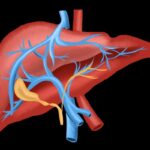The Intriguing World of Epigenetics: From Aging and Cancer to Cricket Leg Regeneration
Epigenetics, a fascinating branch of genetics is behind a myriad of biological phenomena. We see its influence in matters as diverse as epigenetic aging, where alterations to our DNA’s chemical marks may predict our age, and in the development of certain cancers. These chemical alterations, or “epigenetic marks,” regulate when and where genes are turned on or off. But what if I told you that the field of epigenetics also plays a pivotal role in a cricket’s ability to regenerate its leg? Yes, you read that right!

Cricket Leg Regeneration and Epigenetics
In a groundbreaking study published in “Stem Cells and Regeneration”, scientists explored how the cricket, specifically the Gryllus bimaculatus, regenerates lost leg tissue. These crickets use a specialized group of cells called blastemal cells, which can dedifferentiate (lose their specific functions) and then proliferate (grow rapidly). Interestingly, there’s an upsurge in the expression of certain factors controlling epigenetic modification in these blastemal cells. This indicates that epigenetic changes in gene expression could be controlling these cells during regeneration.
What’s particularly captivating is the scientists’ focus on the cricket versions of genes called Enhancer of zeste [Gb’E(z)] and Ubiquitously transcribed tetratricopeptide repeat gene on the X chromosome (Gb’Utx). These genes regulate a specific epigenetic mark on histone H3, a protein that DNA wraps around. When the functions of these genes were interfered with, regenerated cricket legs showed anomalies, implying a significant role for these genes in leg regeneration.
What is Epigenetics?
For the uninitiated, regeneration is the ability of animals to restore lost tissue parts. This regenerative capacity varies across species. For instance, while certain organisms like planarians or newts can regrow large parts of their bodies, humans and many other animals have more limited capabilities.
At the heart of regeneration is epigenetics. In simple terms, epigenetics involves changes in gene expression without altering the underlying DNA sequence. For example, one major epigenetic event is the methylation of DNA, which can turn off gene expression. Histones, the proteins that DNA wraps around, can also undergo chemical modifications, affecting gene expression.
During regeneration, as cells transition between different states, epigenetic changes are thought to be critical. These epigenetic modifications dictate whether a gene is active or silent, steering the cellular behavior during the regrowth process.
Why Does This Matter?
The discovery that epigenetic processes are involved in cricket leg regeneration opens the door to understanding regeneration in a broader sense. If we can decipher the epigenetic codes and mechanisms in organisms like crickets, it could, in theory, provide insights into enhancing regenerative capacities in organisms with limited regenerative potential, including humans.
It’s essential to appreciate the incredible intricacies of life at the molecular level. By delving deep into epigenetic modifications in the humble cricket, we may one day unlock the secrets to more extensive tissue regeneration in other animals, potentially revolutionizing medicine.
So, the next time you see a cricket, remember: it holds secrets that could reshape our understanding of biology and medicine. And that’s the beauty of science – even the smallest of creatures can teach us the most profound lessons.
Recent Blog Posts
-
 13 Jun 2025MTL Epitherapeutics and RI-MUHC Develop Early Prostate Cancer Blood Test
13 Jun 2025MTL Epitherapeutics and RI-MUHC Develop Early Prostate Cancer Blood Test -
 11 Jan 2025EpiAge Research Publication Signals a New Era in Understanding Biological Aging
11 Jan 2025EpiAge Research Publication Signals a New Era in Understanding Biological Aging -
 18 Nov 2024EpiMedtech Global Announces FDA Registration of EPIAGE, the First Epigenetic Age Test Registered by the FDA
18 Nov 2024EpiMedtech Global Announces FDA Registration of EPIAGE, the First Epigenetic Age Test Registered by the FDA -
 18 Nov 2024EpiMedTech Global Validates Unique epiCervix HPV Combo Test for Cervical Cancer Detection
18 Nov 2024EpiMedTech Global Validates Unique epiCervix HPV Combo Test for Cervical Cancer Detection -
 31 Oct 2024HKG epiTherapeutics’ MetaGen Genetic Risk Assessment Test Receives FDA Registration, Now Available in the U.S.
31 Oct 2024HKG epiTherapeutics’ MetaGen Genetic Risk Assessment Test Receives FDA Registration, Now Available in the U.S. -
 31 Oct 2024EpiMedTech Global Launches epiGeneComplete: A Breakthrough Genetic and Epigenetic Test for Comprehensive Health Diagnostics
31 Oct 2024EpiMedTech Global Launches epiGeneComplete: A Breakthrough Genetic and Epigenetic Test for Comprehensive Health Diagnostics -
 30 Oct 2024Enhanced Early Detection of Liver Cancer
30 Oct 2024Enhanced Early Detection of Liver Cancer -
 08 Oct 2024Are Microarrays Still Reliable? How Next-Generation Sequencing Outperforms Traditional Methods
08 Oct 2024Are Microarrays Still Reliable? How Next-Generation Sequencing Outperforms Traditional Methods



